Get PeakVisor App
Sign In
Search by GPS coordinates
- Latitude
- ° ' ''
- Longitude
- ° ' ''
- Units of Length

Yes
Cancel
Share ×

Scan the QR code and open PeakVisor on your phone
❤ Wishlist ×
Choose
Delete
The Ōu Mountains are home to spectacular temperate forests boasting rare and endemic species, ski resorts featuring tremendous winter snowfall, and volcanic hot springs known as Onsens. There are 870 named peaks in Ōu Mountains (奥羽山脈); the highest and most prominent is Mt. Iwate (岩手山).
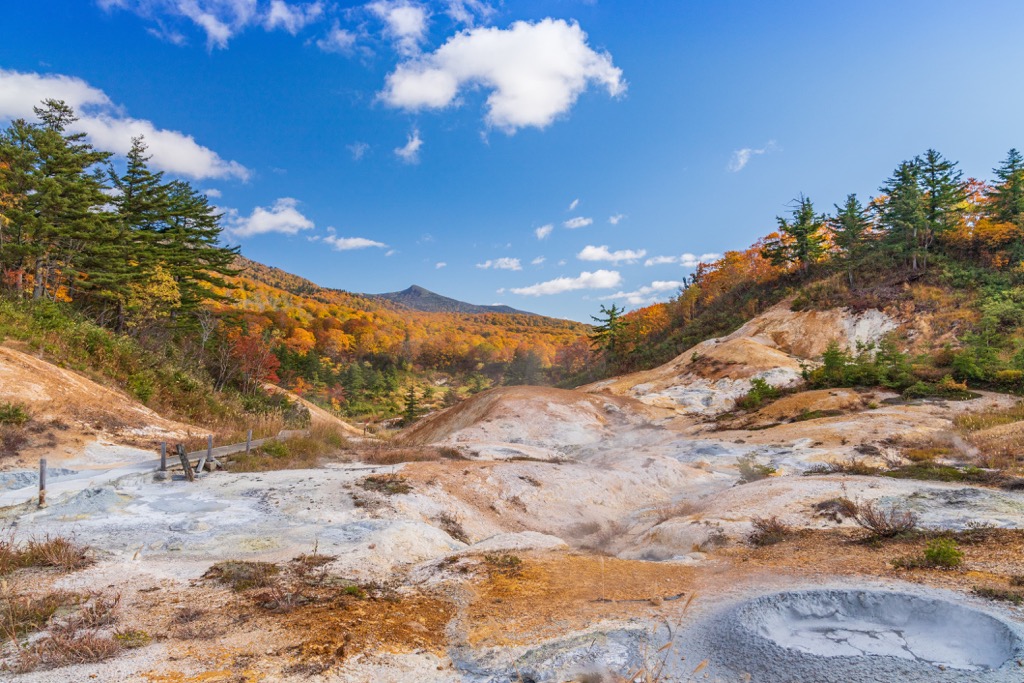
The Ōu Mountains are nestled in the northern region of Japan’s main island of Honshu (本州) and form part of the Tōhoku region (東北地方). From northern Aomori (青森県), the rocky massif extends south into Akita (秋田県), Iwate (岩手県), Yamagata (山形県), Miyagi (宮城県), and Fukushima (福島県) Prefectures. Spanning 500 km (311 mi) north to south, the Ōu Mountains comprise Japan’s longest mountain range. Despite their length, the range is relatively narrow, bearing a width of only 35 km (22 mi).
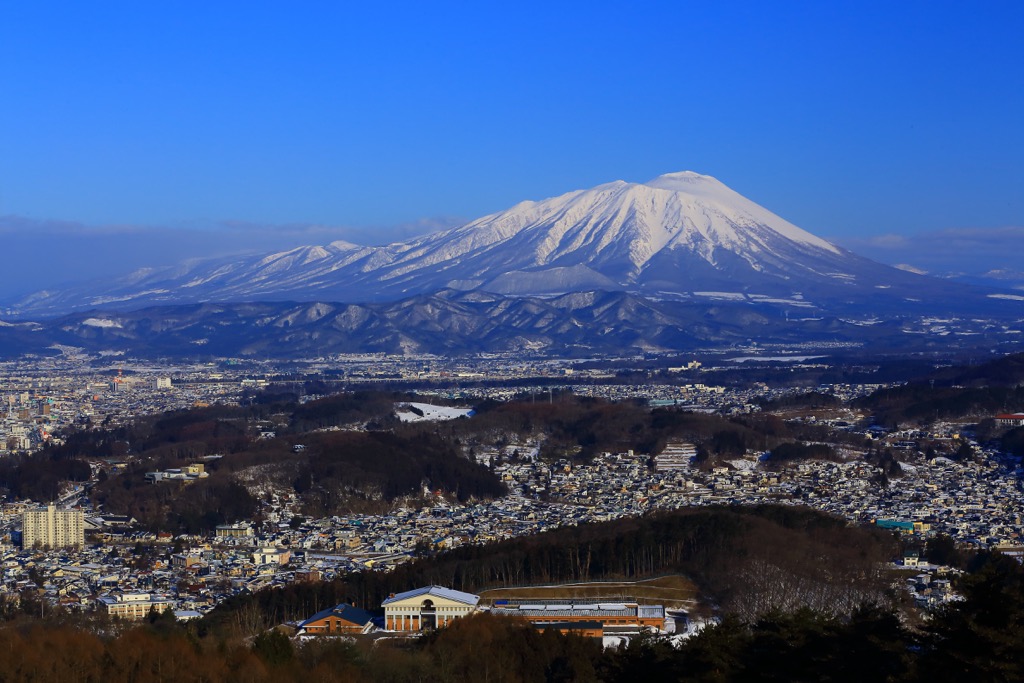
Japan is an archipelago on the Western edge of the Pacific Plate. The entire perimeter of this massive plate, which extends from the edge of the continental U.S., Canada, Alaska, Japan, and the southern Pacific Islands, is known as the Ring of Fire. The region is the most volcanically active on Earth; Japan is a product of this volcanic activity and is a nation of no less than 14,125 separate islands (of at least 100m / 330 ft in diameter), all volcanic in origin.
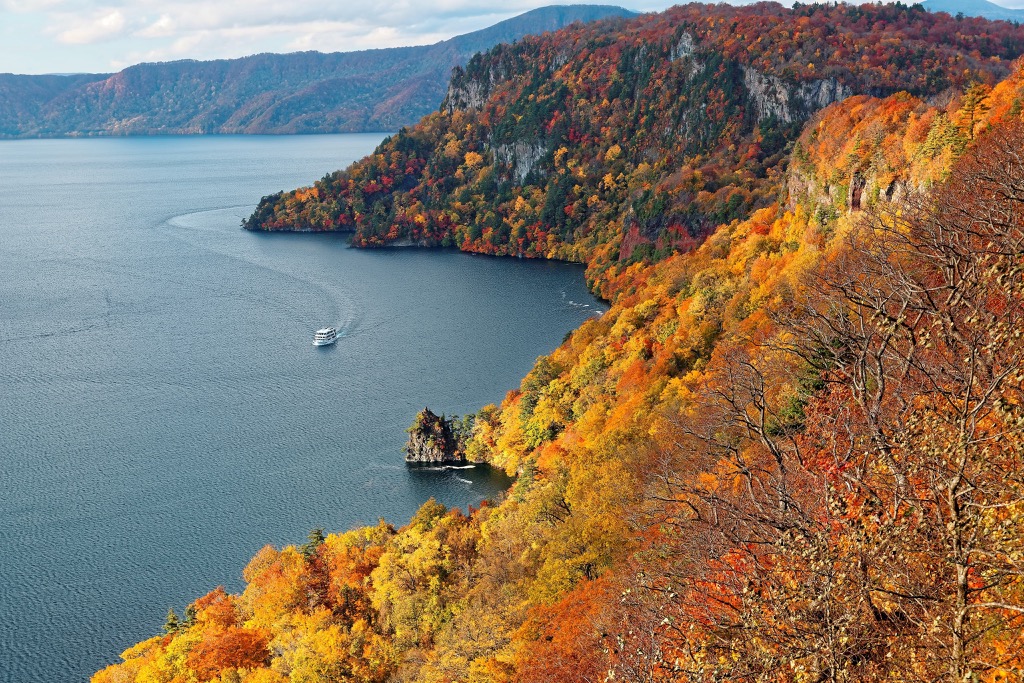
The Ōu Mountains bear hard and sturdy igneous rock and owe their formation to ancient volcanic activity and geological forces during the Pliocene epoch. The volcanic rock includes andesite, basalt, and dacite, known for its tough exterior that is slow to weather.
The result is a diverse landscape marked by towering peaks, deep valleys, and pristine rivers. Due to the range’s volcanic past, fumaroles, hot springs, and crater lakes appear throughout.
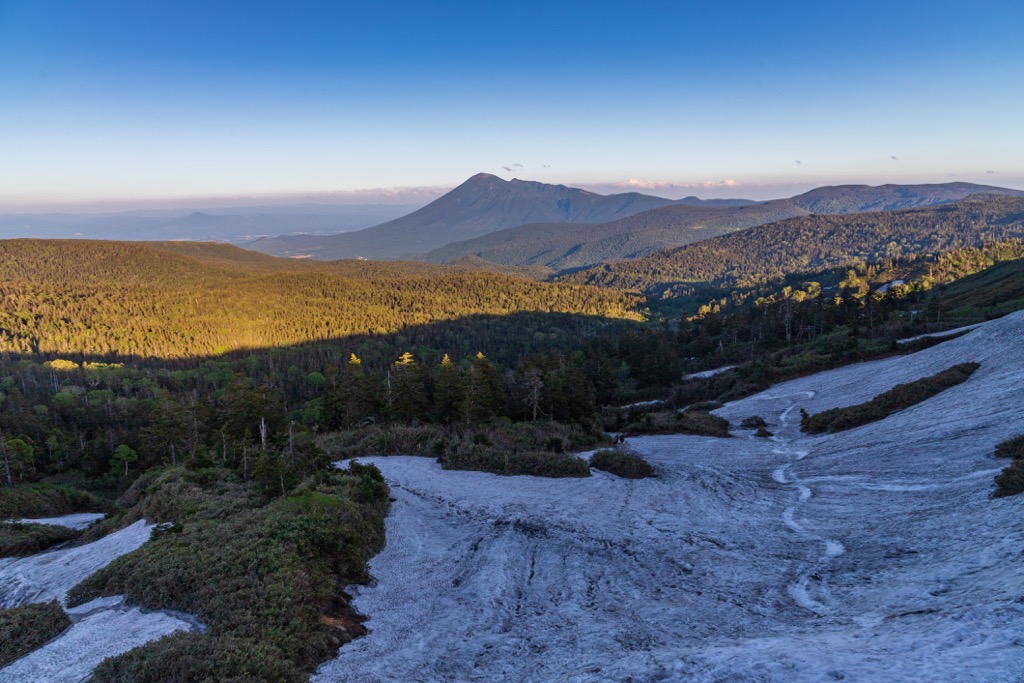
Japan is host to one of the world’s most productive snow zones. January and February typically feature massive amounts of snow due to cold, continental air from Siberia flowing across the Sea of Japan. Similar to lake effect snow, the cold air draws up moisture from the relatively warm Sea of Japan and deposits it as snow across the alpine regions. The mountains of Honshu and the northern island of Hokkaido are legendary powder skiing destinations for skiers worldwide.
Besides deep powder skiing, The Ōu Mountains are renowned for their abundant hot springs and onsen resorts. You can relax and rejuvenate in therapeutic mineral-rich waters while enjoying scenic mountain views; this is the quintessential alpine experience of Japan. Tsuta Onsen Ryokan (蔦温泉旅館) in Aomori Prefecture is particularly famous, offering rustic and traditional hot spring experiences in serene mountain surroundings.
Hiking is challenging due to the steep terrain and thin, rocky ridges. Some prominent peaks popular among hikers for their natural beauty and more inviting topography are Mt. Hachimantai (八幡平), Mt. Odake (大岳山), and Mt. Akita-Komagatake (秋田駒ヶ岳).
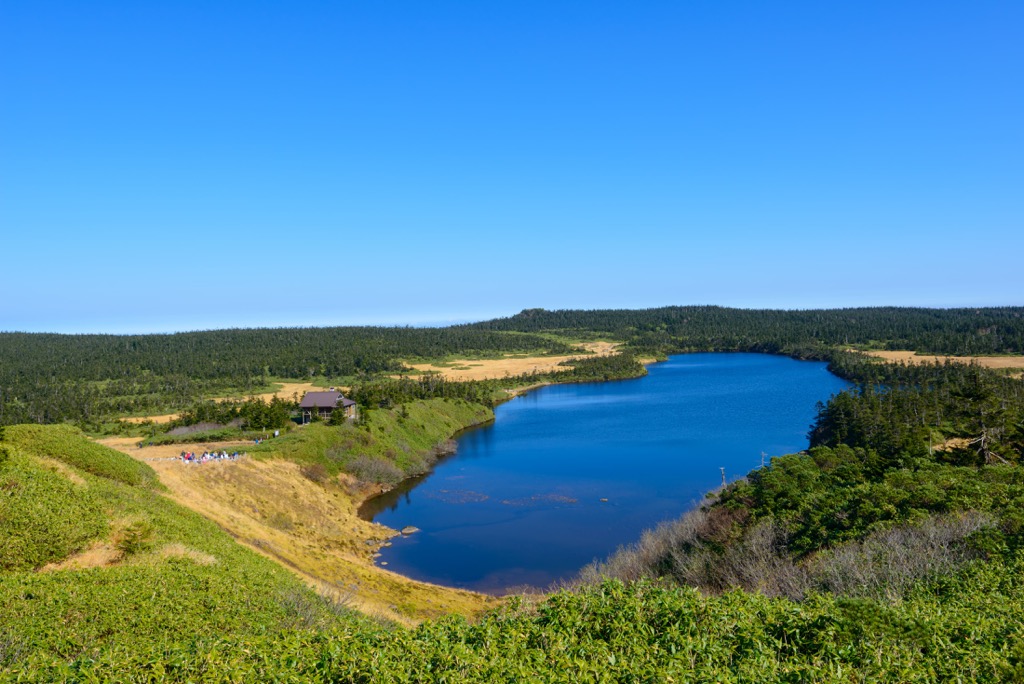
The Ōu Mountains are a haven for diverse flora and fauna. The range’s Towada-Hachimantai National Park (十和田八幡平国立公園) offers various scenic mountain trails and protected ecological diversity.
Expansive forests dominate the Island of Honshū, including the Ōu Mountains. Because Japan, and the Ōu Mountains, are so geographically long, ecoregions change dramatically depending on latitude.
Generally, the range is characterized by an abundance of spruce and fir species, particularly the Jezo Spruce, Veitch's Fir, Maries fir, Japanese beech, and the indigenous perennials Komakusa, typical of northern Japan’s temperate region. These towering trees provide the foundation for an undergrowth of shrubs, mosses, and thickets.
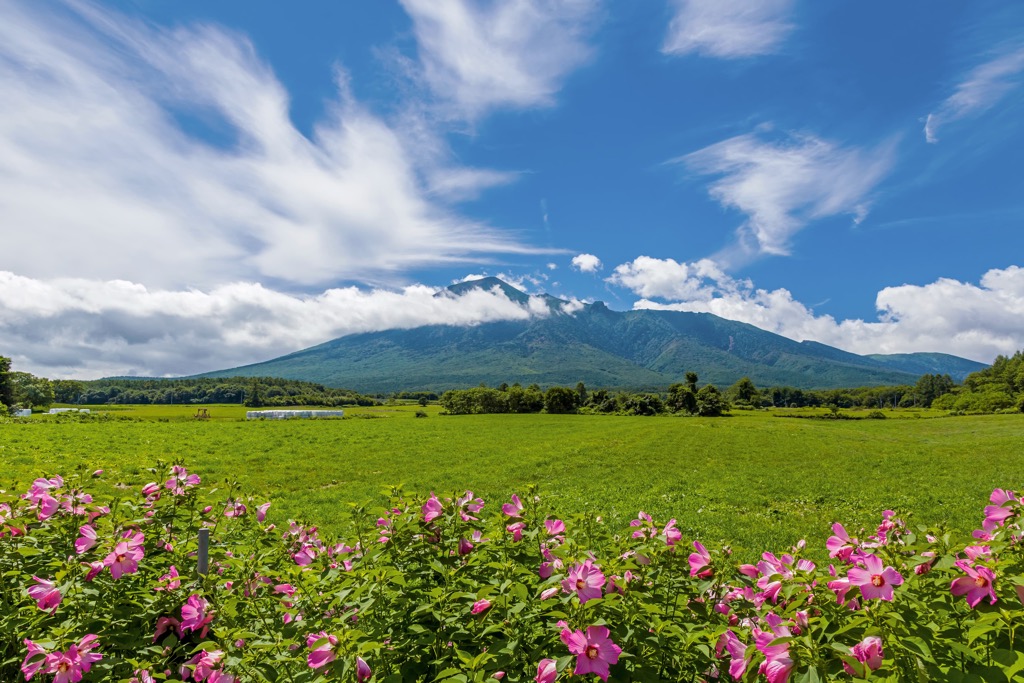
The ecoregion is a habitat for various wildlife, including the Yezo brown bear, Asian black bear, and Sika deer. Some portions of the forest are host to a rare, endemic goat-antelope called the Japanese Serow.
The region boasts a diverse avifauna, featuring species such as the spotted nutcracker, arctic warbler, golden eagle, and rock ptarmigan. The dense woodlands are home to the beautiful Japanese green pheasant and the elegant black woodpecker.
Japan is a highly developed and densely populated nation. Honshu, Japan’s main island and the location of the Ōu Mountains, is home to 104 million people, despite being half the size of the U.S. state of California. Due to human intrusion, the unique alpine ecosystems face continuous threats from activities such as poaching, habitat fragmentation from roads and settlements, and tourism.
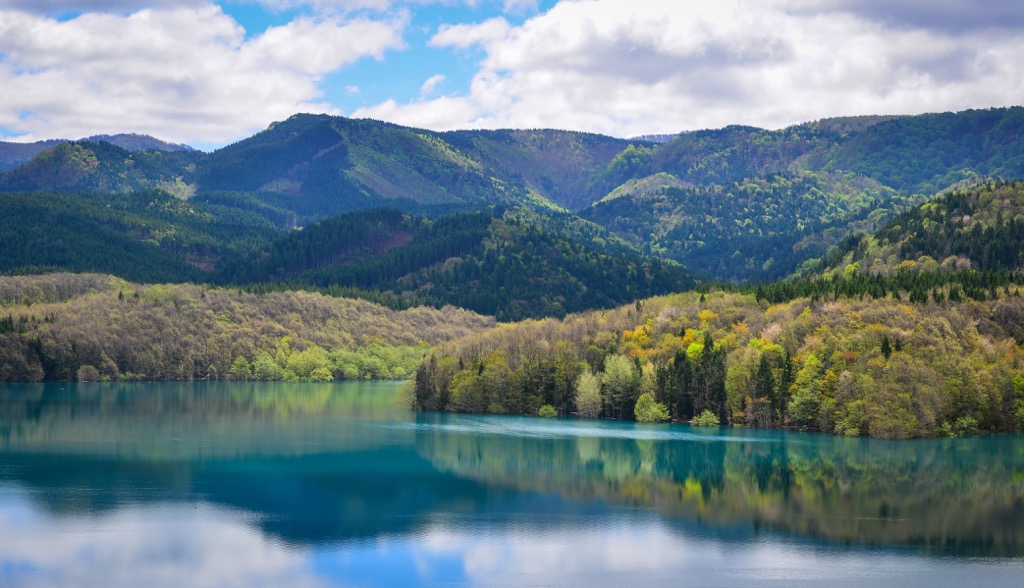
Homo Sapiens likely migrated out of Africa and successfully colonized the world beginning around 70,000 years ago. Archeologists estimate that the first people arrived in Japan around 40,000 years ago.
Before 300 BC, Japan was essentially a nation of hunter-gatherers. Around this time, the Yafoi People migrated and introduced iron technology and agriculture, specifically rice cultivation.
Japan is a fertile nation; landowners became wealthy under a new regime of agriculture and permanent settlement. For centuries, Japan was ruled regionally by various warring clans. Around 1200 years ago, the island came under the rule of a central imperial government.
Japan is geographically isolated as an island nation and has featured isolationist policies for the last thousand years. For 200 years, between about 1650 and 1850, Japan was completely isolated from the outside world; there were no foreigners and no foreign trade or even contact during this time.
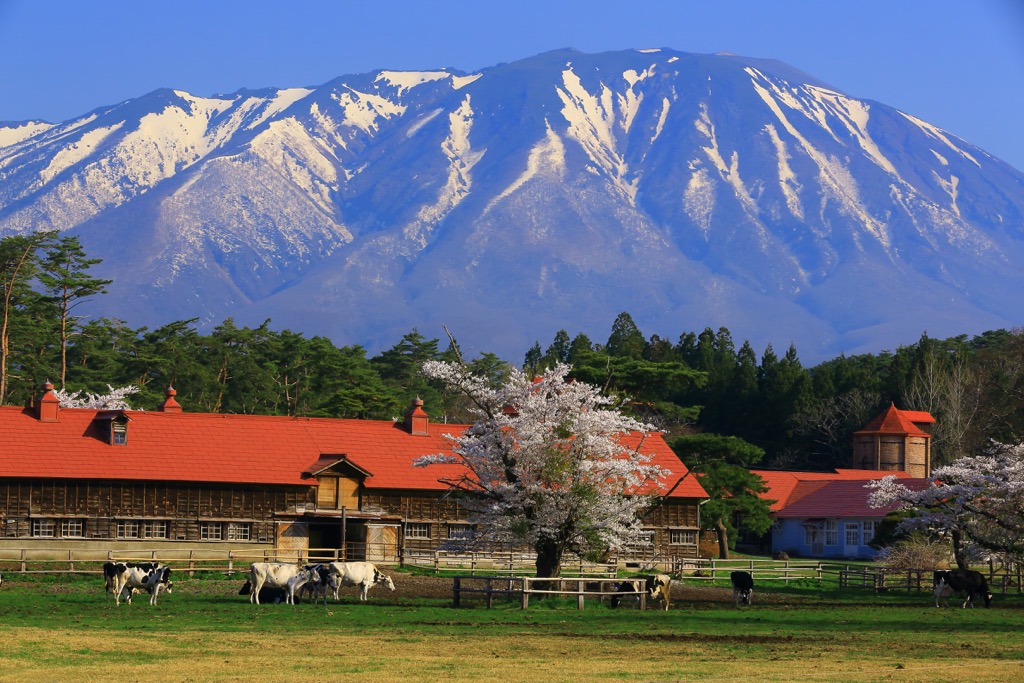
The U.S. succeeded in breaking this barrier and establishing relations in 1853. However, rising anti-western sentiment eventually led to Japan’s siding with the Axis Powers (Germany, Italy) during WWII. During this time, Japan invaded China, leading to the deaths of millions of Chinese citizens. Conversely, the U.S. devastated Japanese cities in response to the bombing of Pearl Harbor, firebombing Tokyo, and ultimately dropping two nuclear bombs to end the war.
Although the destruction of Tokyo using conventional weapons was more deadly than the nuclear warheads, the use of atomic weapons was highly controversial. Nevertheless, Japan repented for its sins during the war, including the atrocities committed against China, and has severely limited its military capacity since the war.
Post-war, Japan rebuilt itself and experienced an incredible economic boom in the ’80s. Tokyo is one of the world’s largest and most economically connected cities. Unfortunately, low birth rates and long life expectancy have strained society in recent years as Japan grapples with an ever-growing elderly population.
Most of Japan’s mountain towns remain wonderfully quaint and culturally true to the Japanese style. Hundreds of small, non-commercial ski resorts dot the hills, many featuring only surface lifts.
The Japanese appreciate nature’s mountain enclaves and believe spirits live there. Few native skiers venture into the trees of the ski resorts, believing that it disturbs the spirits. Some resorts technically forbid tree skiing.
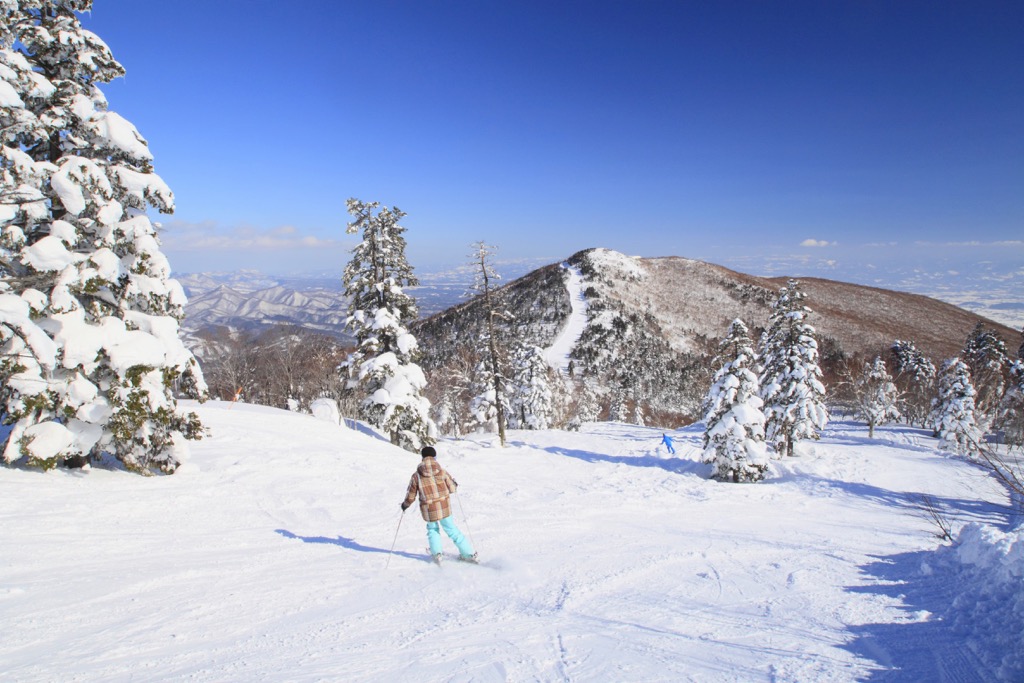
Nevertheless, Japan features a strong climbing culture, and Japanese climbers have completed many notable descents; the Japanese have 104 first ascents in the Himalayas, more than any other country.
Reaching 2,038 meters (6,686 ft), Mt. Iwate is one of the most iconic peaks in the Ōu Mountains. The highest summit in the Ōu Mountains offers breathtaking panoramic views of the surrounding landscape.
Several routes wind different passages up the hill, so choose the one that best suits your climbing skills and fitness levels. For the shortest route of 4.8 km (3 mi), start at the Uwabo Trailhead, but if you prefer more of a challenge, then the 9.6 km (6 mi) Nanataki Course tackles ridgelines and affords varied landscapes. From Nanataki, you’ll pass steaming fumaroles leading toward Mt. Iwate.
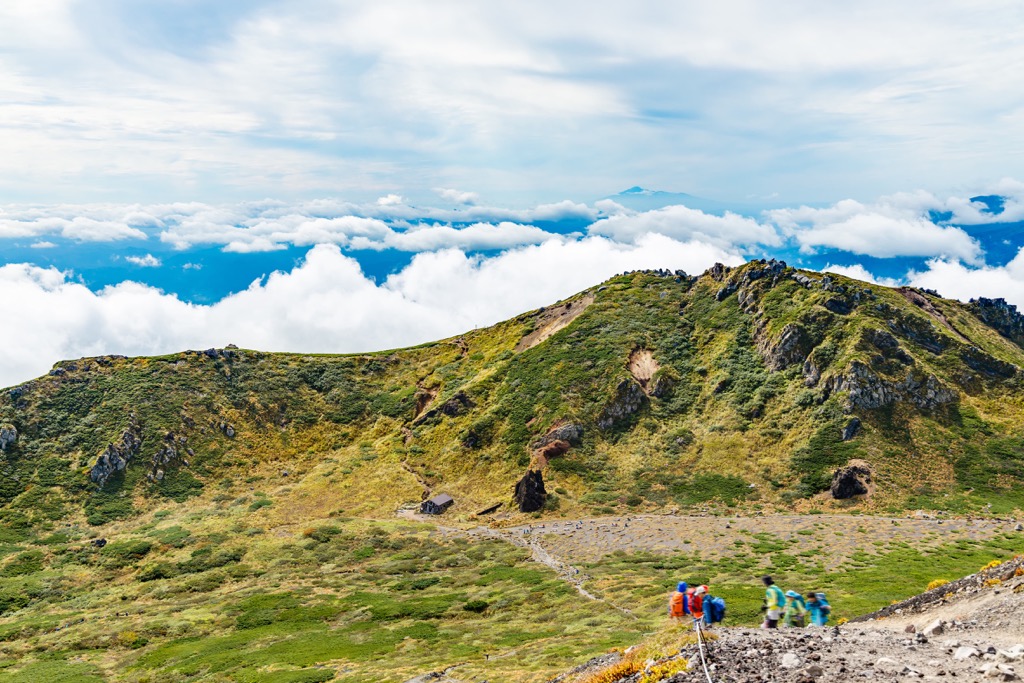
Mt. Iwate’s east features enchanting forests filled with towering Japanese beech and birch trees, offering a gentler approach to the summit.
Reaching the peak of Mt. Iwate rewards you with unparalleled views of the Towada Hachimantai National Park’s rippling network and volcanic terrain. If you’re blessed with a clear day, you may locate the distant Pacific Ocean on the horizon.
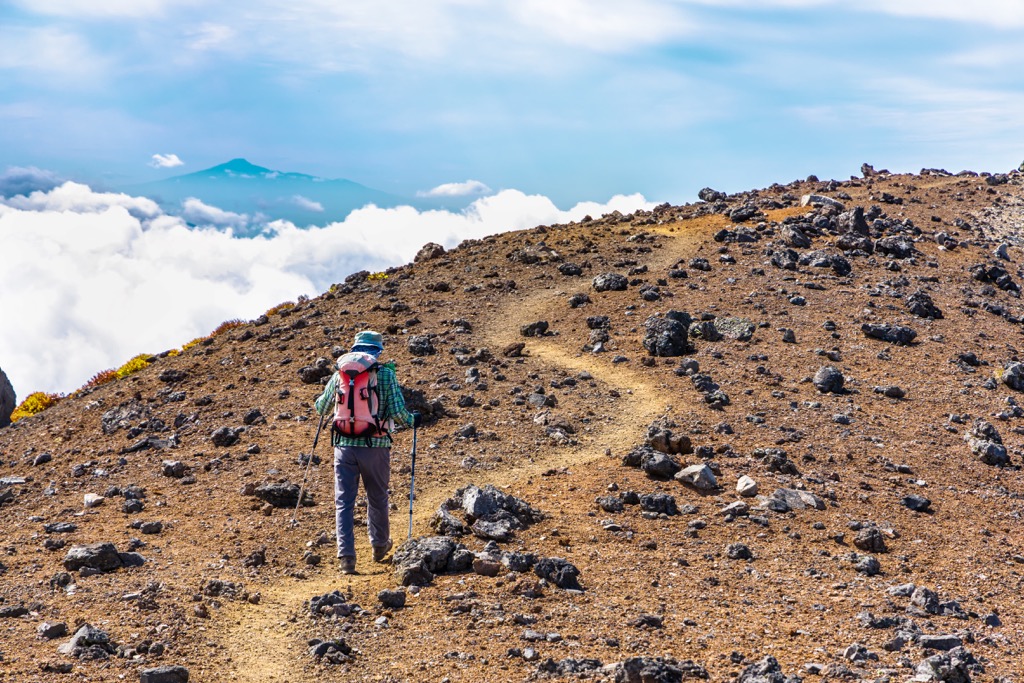
One of the Ōu Mountains' northernmost massifs, Mt. Hakkōda, is a volcanic complex composed of several peaks, the highest being Mt. Odake. Due to its volcanic origins, the mountain features lava plateaus and volcanic rocks, adding to the allure of the hiking experience.
Like Mt. Iwate, Mt Hakkōda offers a range of hiking routes suitable for different skill levels, from leisurely nature walks to more challenging ascents. The most welcoming path is the Hakkōda Gourd Line. However, this first involves boarding the Hakkōda Ropeway for a ride of stunning alpine scenery to reach the elevated start point. You’ll meander the Tamoyachi Marsh on the 3.5 km (2.2 mi) trail before you ascend Mt. Tamoyachi.
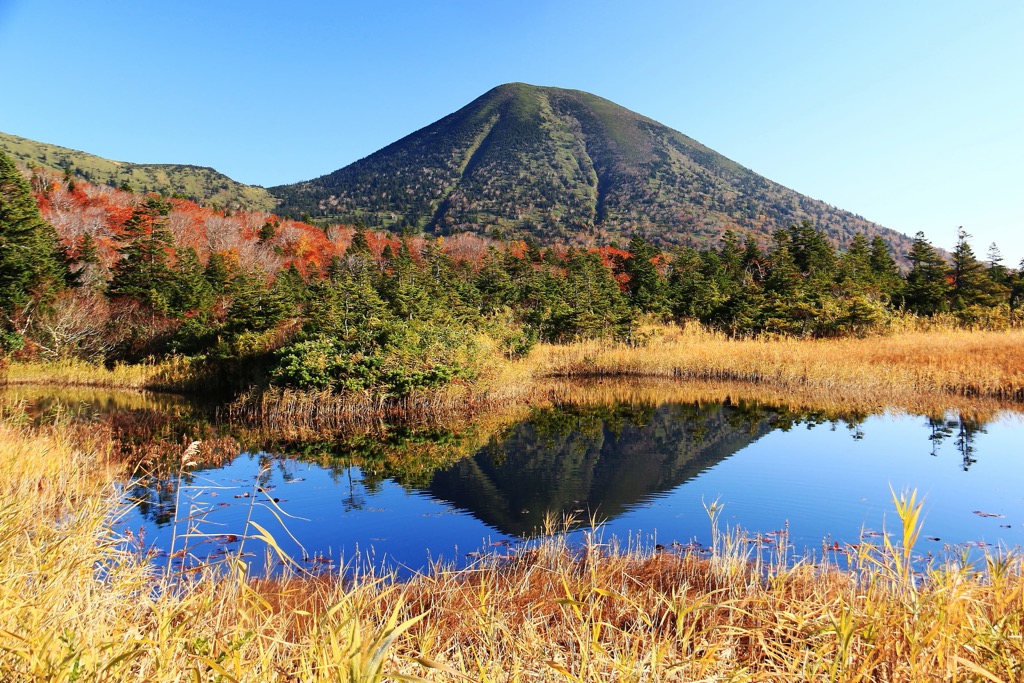
For the more adventurous, take the Sukayu Onsen Trail, featuring rugged terrain, volcanic rocks, and steeper inclines. The hike begins at a historic hot spring at Mt Hakkōda’s foothills, which will be a welcome respite on your return. On the climb, you’ll pass through alpine meadows teeming with wildflowers during summer.
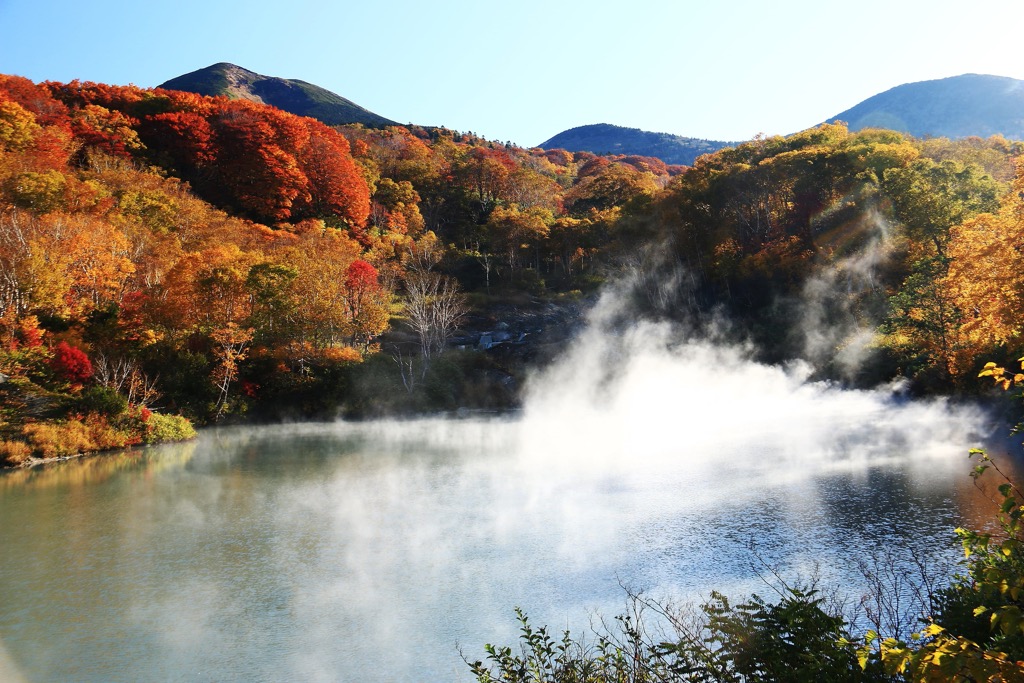
For seasoned hikers and mountaineers seeking a challenging and rewarding climb, the Odake Hiking Trail is the ultimate route. This trail demands more physical fitness and experience, involving sheer inclines, rugged paths, and potentially changing weather conditions.
Mt. Hachimantai Traverse links Mt. Hachimantail’s volcanic plateau with Mt. Akita-Komagatake and Mt. Iwate. It is for experienced hikers due to its length and varying terrain of expansive marshlands, alpine meadows, and volcanic craters.
The journey begins at Hachimantai Onsen. Along the way, you'll pass through alpine meadows, volcanic rock formations, and unique geothermal areas with steam vents and sulfurous fumaroles. One of these volcanic wonders is the crater lake, Kagaminuma Pond (鏡沼). When the lake’s ice starts to thaw in late spring, it’s nicknamed ‘Dragon’s Eye’ as the white snow creates an iris against the pond’s melting blue edge and center.
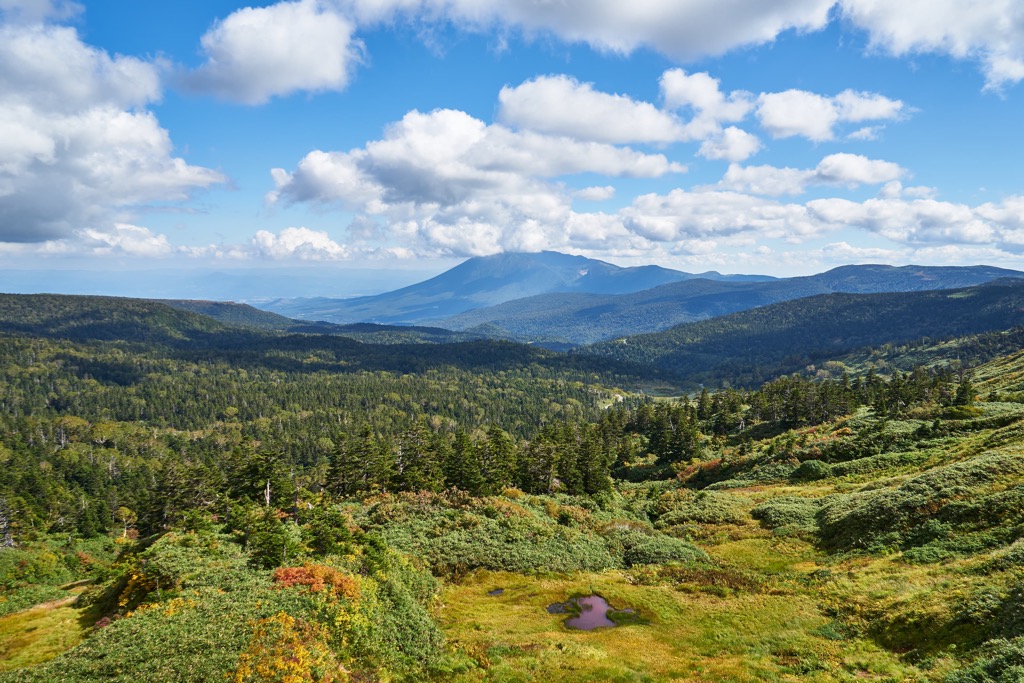
After enjoying the views from Hachimantai Summit, the trail continues towards Mt. Akita-Komagatake, taking you through picturesque marshlands, pristine forests, and scenic ridgelines. The summit of Mt. Akita-Komagatake offers breathtaking vistas of the surrounding peaks and valleys and the sparkling Lake Tazawa (田沢湖).
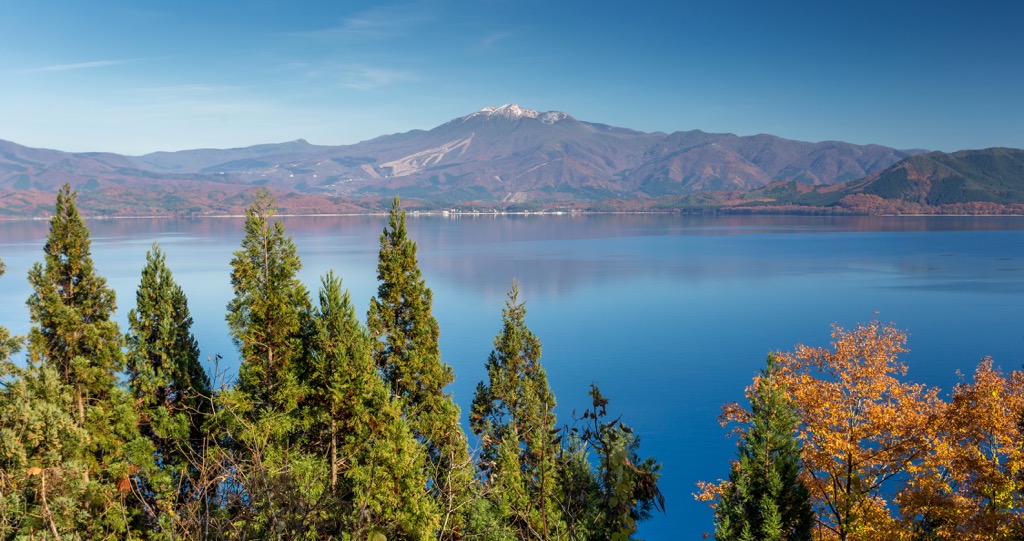
The final leg of the Hachimantai Traverse takes you from Mt. Akita-Komagatake to Mt. Iwate, the region’s highest peak. This section presents a combination of alpine terrain and dense beech forests. As you ascend toward Mt. Iwate, you'll encounter volcanic landscapes, including ancient lava flows and unique rock formations.
Nestled within the majestic landscape of Hachimantai National Park lies the breathtaking Lake Towada (十和田湖), a caldera lake formed by volcanic activity that began nearly 200,000 years ago.
The hilly landscape affords stunning perspectives of Lake Towada, especially from the summits of the lakeside Ogurayama (御倉山) and Ohanabe Yama (御鼻部山). A year-round beauty, Lake Towada is particularly striking in springtime with its symphony of colors. Cherry blossoms paint the lakeside in delicate pinks and whites, while the surrounding forests burst into vibrant greens.
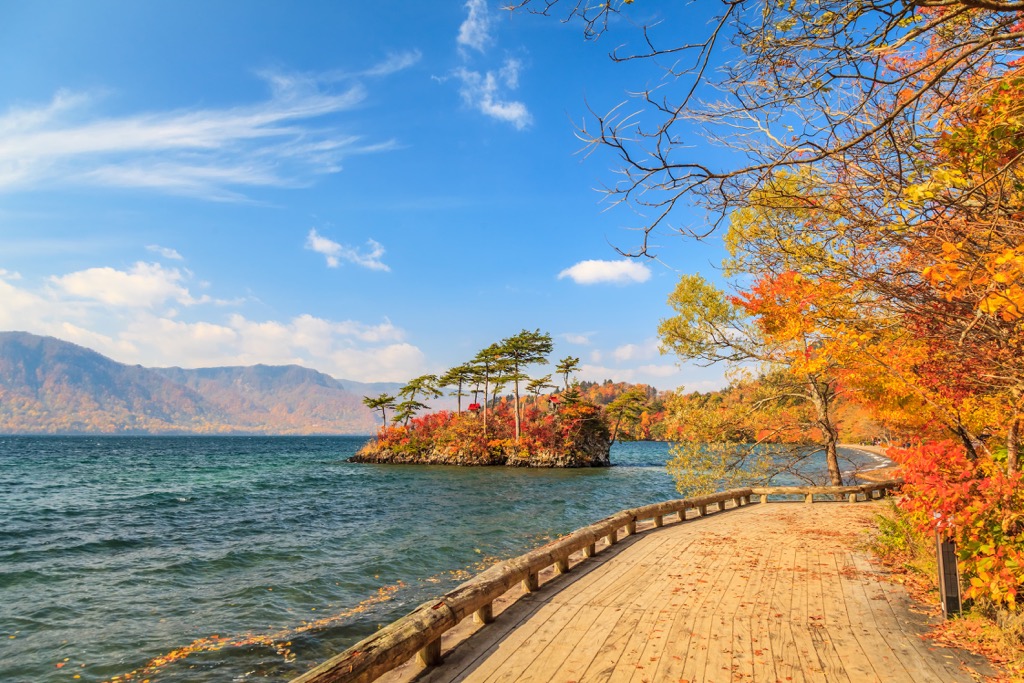
The trail features a 14 km (8.6 mi) path following the Oirase River along cascading waterfalls. Contrasting the stillness of the nearby Lake Towada, Oirase Gorge (奥入瀬渓流) features fast-flowing rapids.
Choshi Otaki (銚子大滝), the largest waterfall in the gorge, is a popular highlight. Its roaring cascade plunges approximately 20 meters (65 ft) into a picturesque pool below. Other notable waterfalls include Kumoi no Taki (雲井の滝), Ashura no Nagare (阿修羅の流れ), and Ishigedo no Taki (石ヶ戸の瀬).
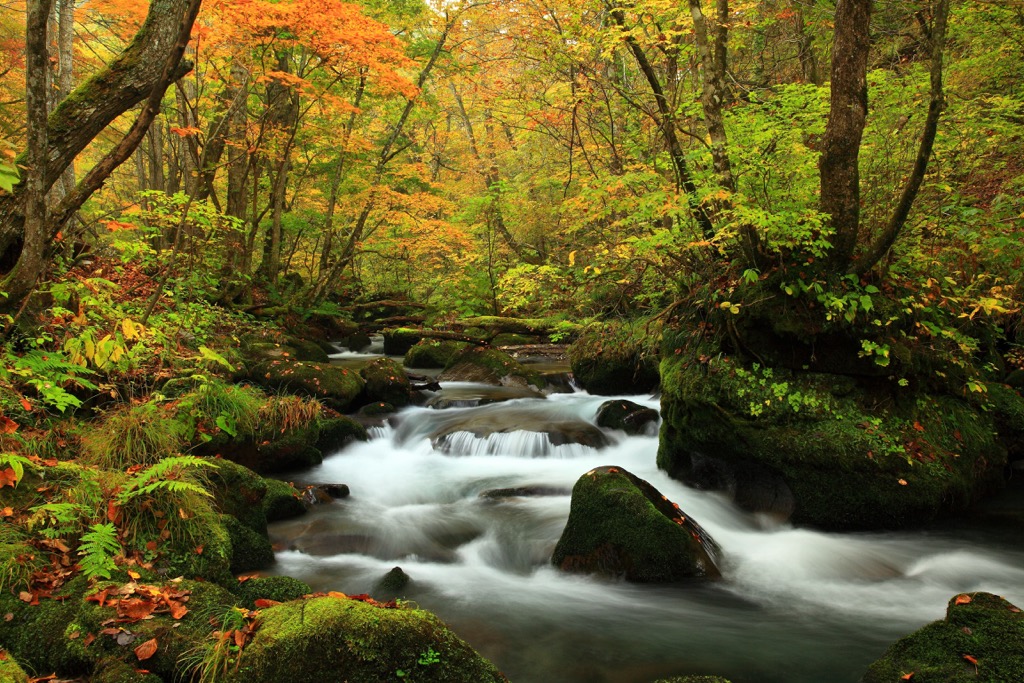
Operating for over 1,000 years, this charming hot spring in Towada-Hacimantai National Park holds records dating back to 1147. Nestled amidst the serene natural beauty of mystical forests and misty mountains, it’s an ideal destination for relaxation and rejuvenation. Tsuta Onsen (蔦温泉旅館) is renowned for its high-quality hot spring waters, which are thought to offer therapeutic properties.
If there is ever a prime season to visit Tsuta Onsen, it is during the autumn months. The leafy foliage transforms into vibrant shades of red, orange, and yellow, creating a mesmerizing backdrop against the rugged hills.
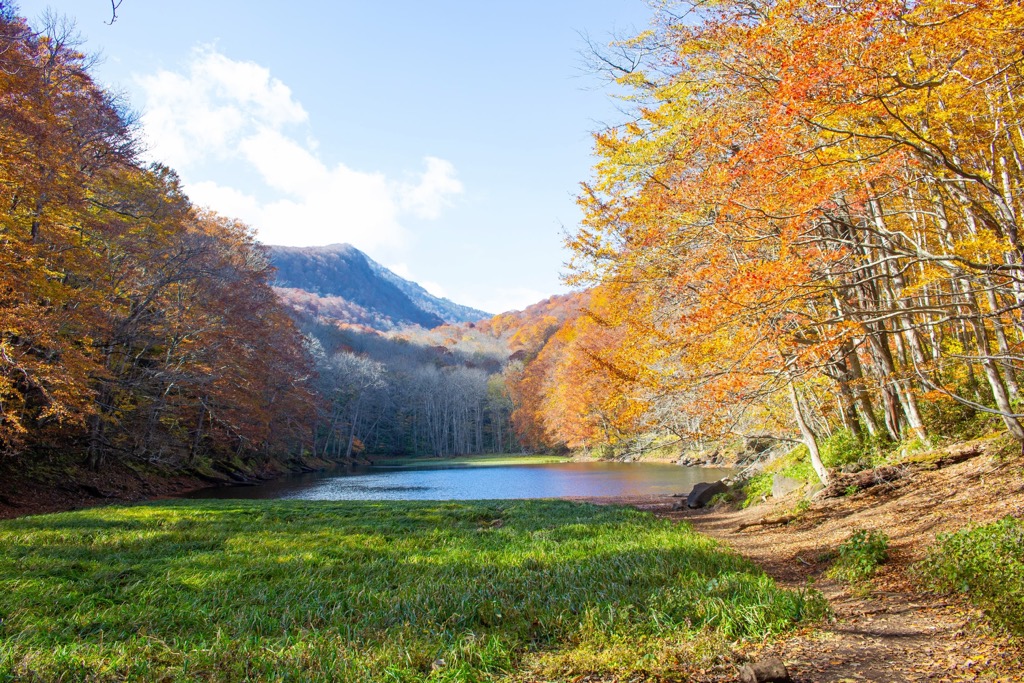
While not part of the Ōu Mountains, the Dewa Sanzan (出羽三山) is a trio of sacred mountains that lie close to Japan’s northern mountain range. The three peaks of Hagurosan (羽黒山), Mt. Gassan (月山), and Mt. Yudono (湯殿山) hold spiritual significance in Japanese folklore and religion.
Starting with the smallest and most accessible of the three mountains, Hagurosan’s ascent features a historic stone stairway bordered by towering cedar trees. The sacred peak is home to the Haguro-san Gojunoto, a striking fifty-tiered pagoda symbolizing the mountain.
The next stop is Mt. Gassan, the tallest of the three peaks at 1,984 meters (6,509 ft). The trail to Mt. Gassan is known for its challenging terrain up rocky slopes and is accessible only during the summer months when the snow has melted. From the top, enjoy breathtaking vistas of the surrounding mountains, including Mt. Chokai and the distant Sea of Japan.

The final leg of the Dewa Sanzan pilgrimage takes you to Mt. Yudono, the most sacred of the three mountains. Instead of climbing Mt. Yudono, the pilgrimage takes you to the inner sanctuary at the mountain's base. The sanctuary is a small, humble wooden building surrounded by cedars.
The secret is out among powder skiers; Japan gets a lot of snow. Fortunately, there are hundreds and hundreds of small family-style ski resorts featuring rich Japanese alpine culture and, frequently, onsens at the base of the mountain. Combine that with epic amounts of powder, and you’ve got the recipe for a ski trip.
The Ōu Mountains aren’t necessarily the most popular for international tourists compared to Nagano or Hokkaido. However, there are some gems here, and you’ll likely avoid the crowds. Don’t expect much in the way of English, but this is less of an issue with smartphones - use a translation app.
Better yet, the locals will be beside themselves with joy if you learn just a bit of Japanese before your trip. It shows respect for their extraordinary culture and is the least you can do in exchange for Japan’s noteworthy hospitality.
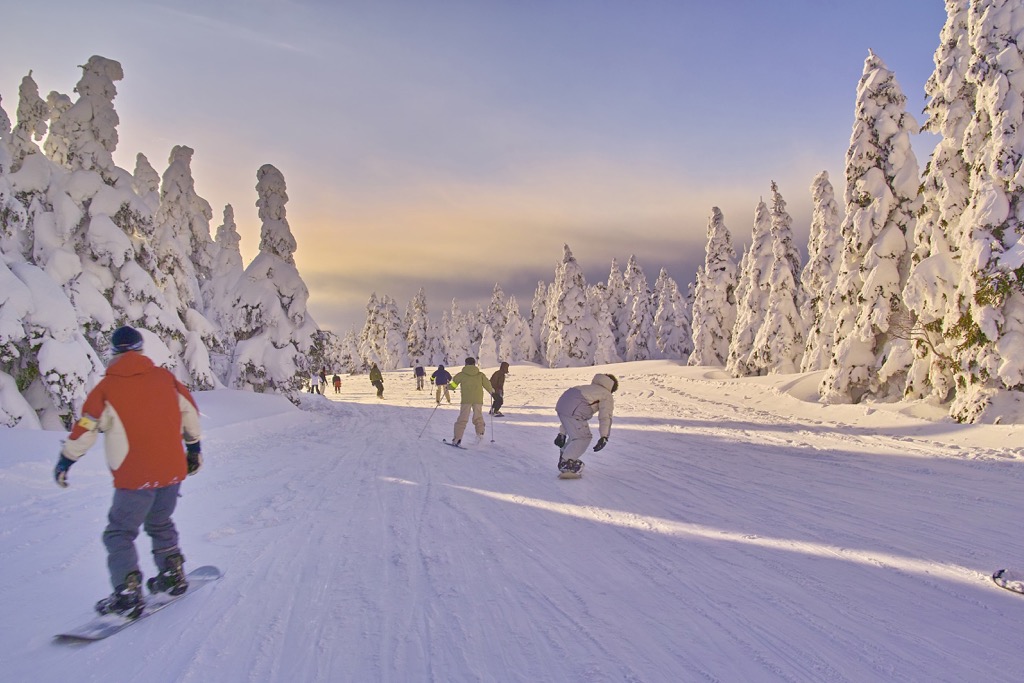
Ani Ski Resort is a hidden treasure in Japanese skiing. It boasts an exceptional combination of abundant snowfall, excellent tree skiing opportunities, and remarkably sparse crowds.
The resort is beautifully secluded on Mt. Moriyoshi in the Akita Prefecture. The name of the game is deep powder skiing through Japan’s magical (spiritual, even) forests. While Ani itself is relatively compact, its true allure lies in the sidecountry and backcountry areas, which demand either a knack for route-finding or the assistance of a knowledgeable guide (or the PeakVisor app).
It's worth noting, however, that the resort doesn’t offer much effortless lift-accessed powder skiing. The rewards are substantial for those willing to exert a bit more effort (i.e., hiking or slapping on the skins). Moreover, it’s challenging to get to and may be out of the way during a traditional ‘Japow’ trip (Nagano and Hokkaido). That said, tourism in the 21st century is all about getting away from other tourists.
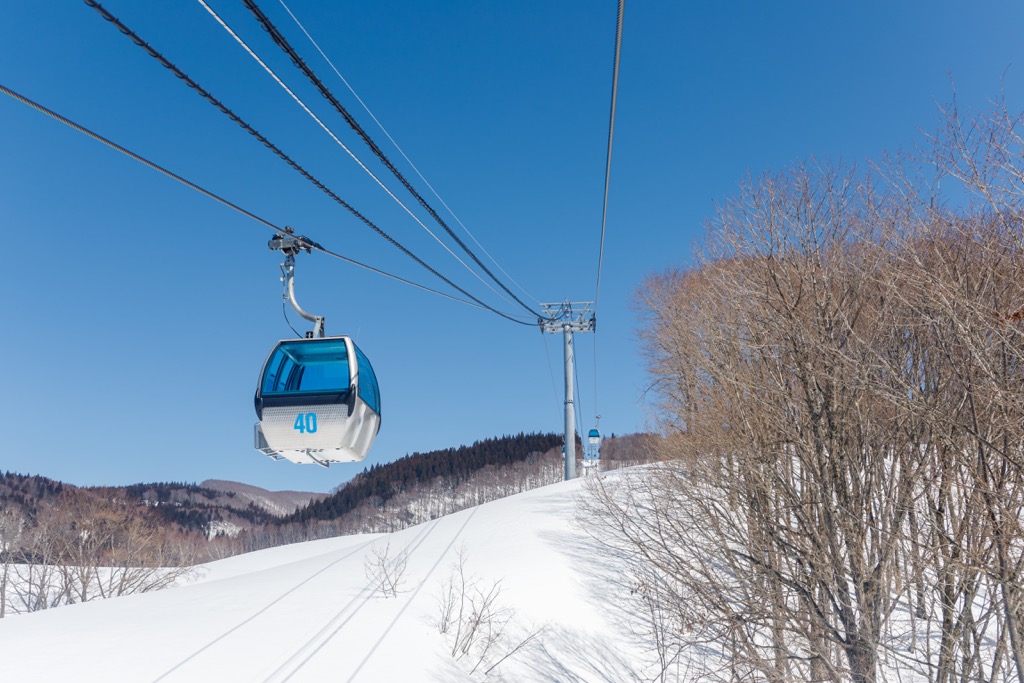
Geto Kogen features 14 trails and a vertical drop of 430 meters. Although it offers only five lifts, the resort's infrastructure is anything but lacking; a hooded quad chair and two gondolas round out the lift system.
For those passionate about powder, off-piste skiing is the primary appeal of Getou Kogen. The resort boasts an array of tree runs along a series of short ridges, and due to the ample snow base, shrubbery is kept to a minimum.
Regrettably, the brief steep segments in the upper sections of the mountain quickly transition into gentler slopes. Approximately twelve designated tree skiing zones exist, while in certain other areas, exercising discretion around ski patrol may be necessary (like in most Japanese resorts).
Akita is difficult to get to, but Geto Kogen is devoid of people and rich in authentic Japanese culture.
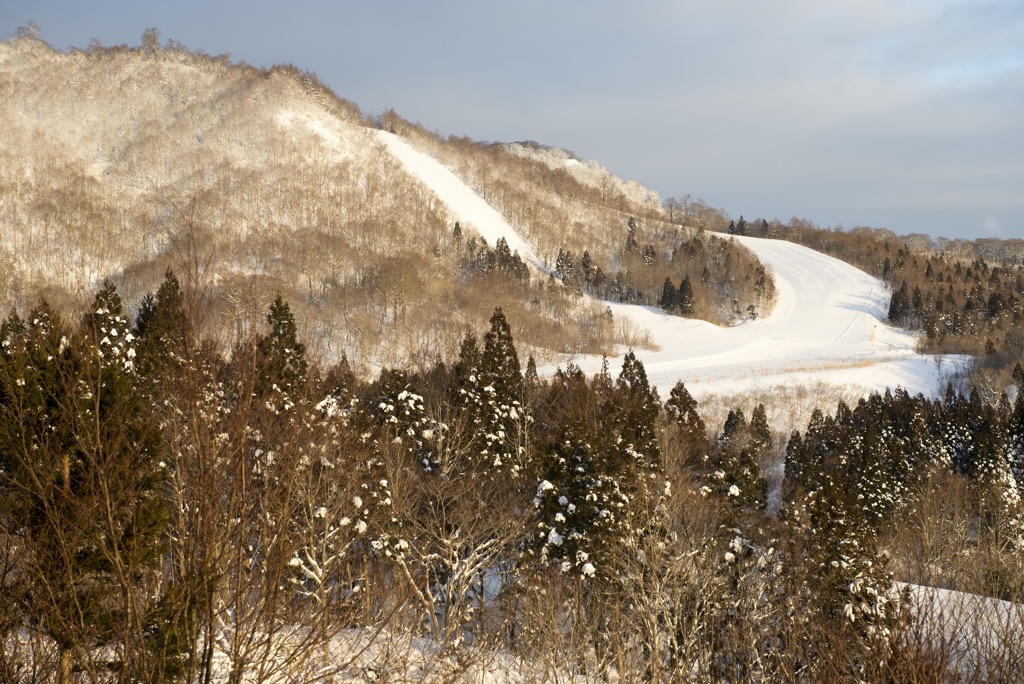
This northern Japanese city offers a blend of stunning mountains and picturesque landscapes and is a destination for outdoor enthusiasts. However, Aomori City (青森市) may not suit those seeking a bustling urban experience, and its limited English signage and harsh winters might present challenges. Still, Aomori City is a fascinating destination for travelers who wish for an authentic, off-the-beaten-path Japanese experience.
Uncover Aomori City’s history with a visit to Hirosaki Park (弘前公園). The park surrounds Hirosaki Castle (弘前城), an impressive Edo-period fortress with a three-story tower with panoramic views. During the cherry blossom season in spring, the park transforms into a sea of pink and white, attracting visitors to witness the hanami (flower viewing) tradition.
For those who want to explore Aomori’s hills without much effort, board the Hakkōda Ropeway (八甲田ロープウェー 山麓駅) for thrilling aerial views year-round. Enjoy lush landscapes and alpine flowers in spring and summer. Winter transforms the Hakkōda Mountains into a snowy paradise, attracting skiers and snowboarders.
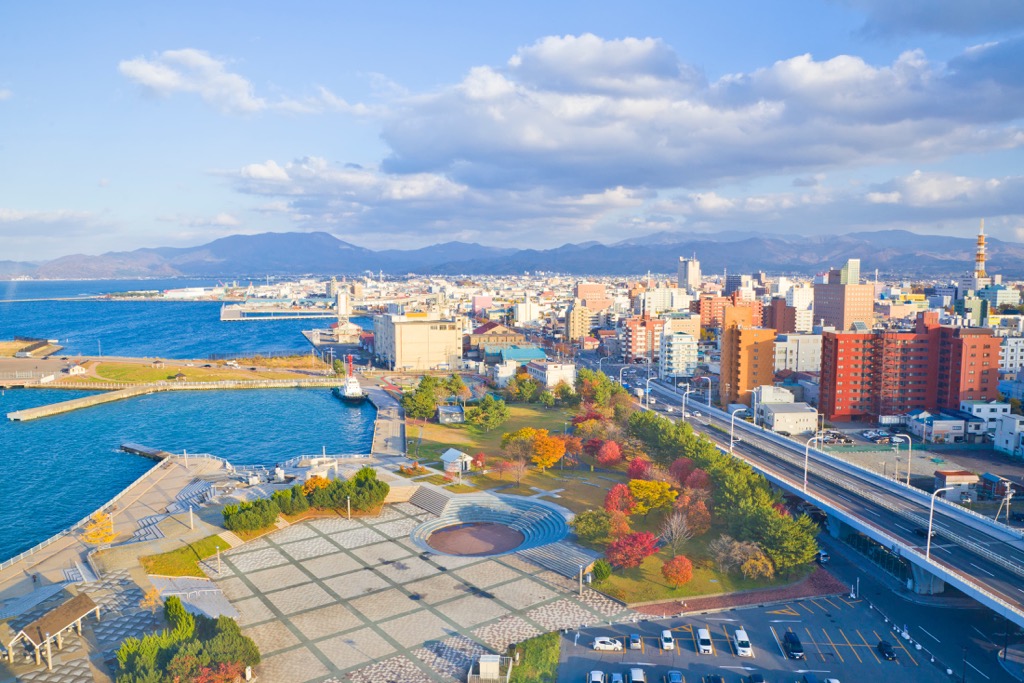
Revel in Aomori’s waterfront charm at Aomori Bay (青森湾), offering stunning sea views. It's known for its seasonal beauty, cherry blossoms in spring, and vibrant autumn foliage. A popular spot for relaxation, the bay is also significant for the city's fishing industry and provides access to nearby attractions. Wander along the bayfront paths leading to the Aomori Bay Promenade to admire the expansive Mutsu Bay.
Japan’s ancient feudal city, Morioka (盛岡市), is an underrated destination offering a rich cultural heritage. Although the limited English proficiency, seasonal extremes, and relatively modest nightlife may pose some challenges, the warm-hearted locals make Morioka an inviting destination for travelers seeking a cultural experience.
Soak up the culture and history at Morioka Castle Site Park (盛岡城跡公園), the former site of Morioka Castle, constructed in 1598. Although the original castle structures are gone, you can explore remnants like stone walls and moats amidst the beautifully landscaped park.
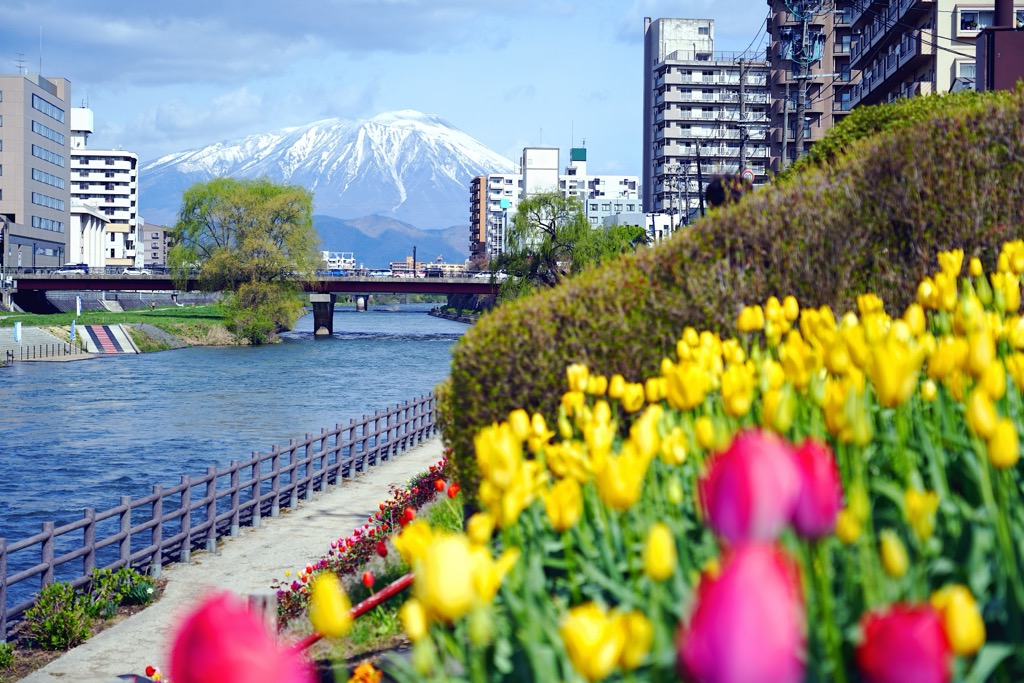
Surrounded by lush greenery, Takamatsu Pond (高松の池) offers accessibility, abundant wildlife, and beautiful scenery throughout the year. It's popular for cherry blossom viewing in spring and has well-maintained walking trails for leisurely exploration.
If you’re itching for a climb, nearby Himekamiyama (姫神山) is the closest peak. Easily accessible from Morioka, the mountain offers various hiking trails suitable for all skill levels. With shrines and temples along the trails, Himekamiyama, like many peaks of the Ōu Mountains, holds cultural significance.
Explore Ōu Mountains with the PeakVisor 3D Map and identify its summits.








